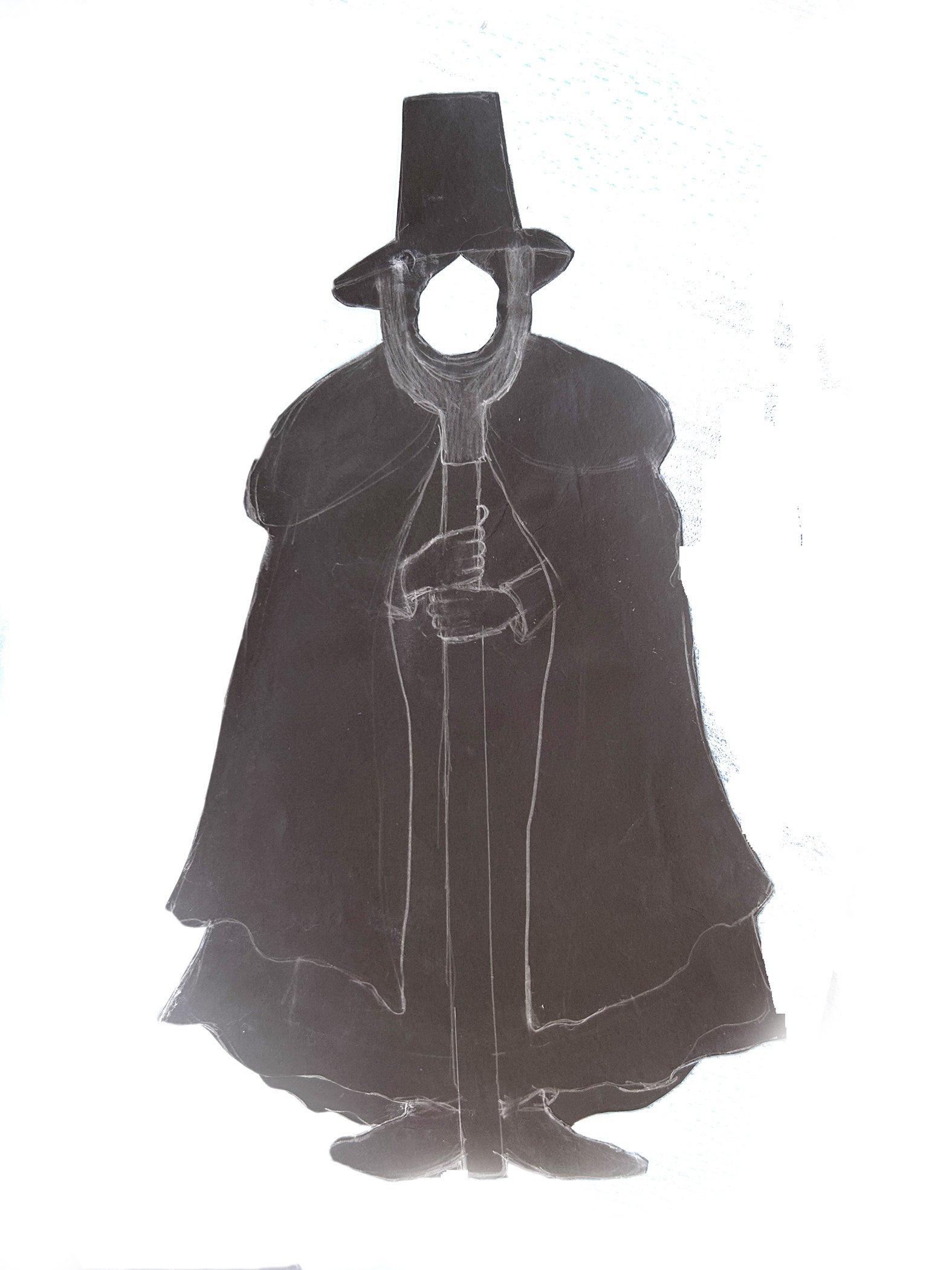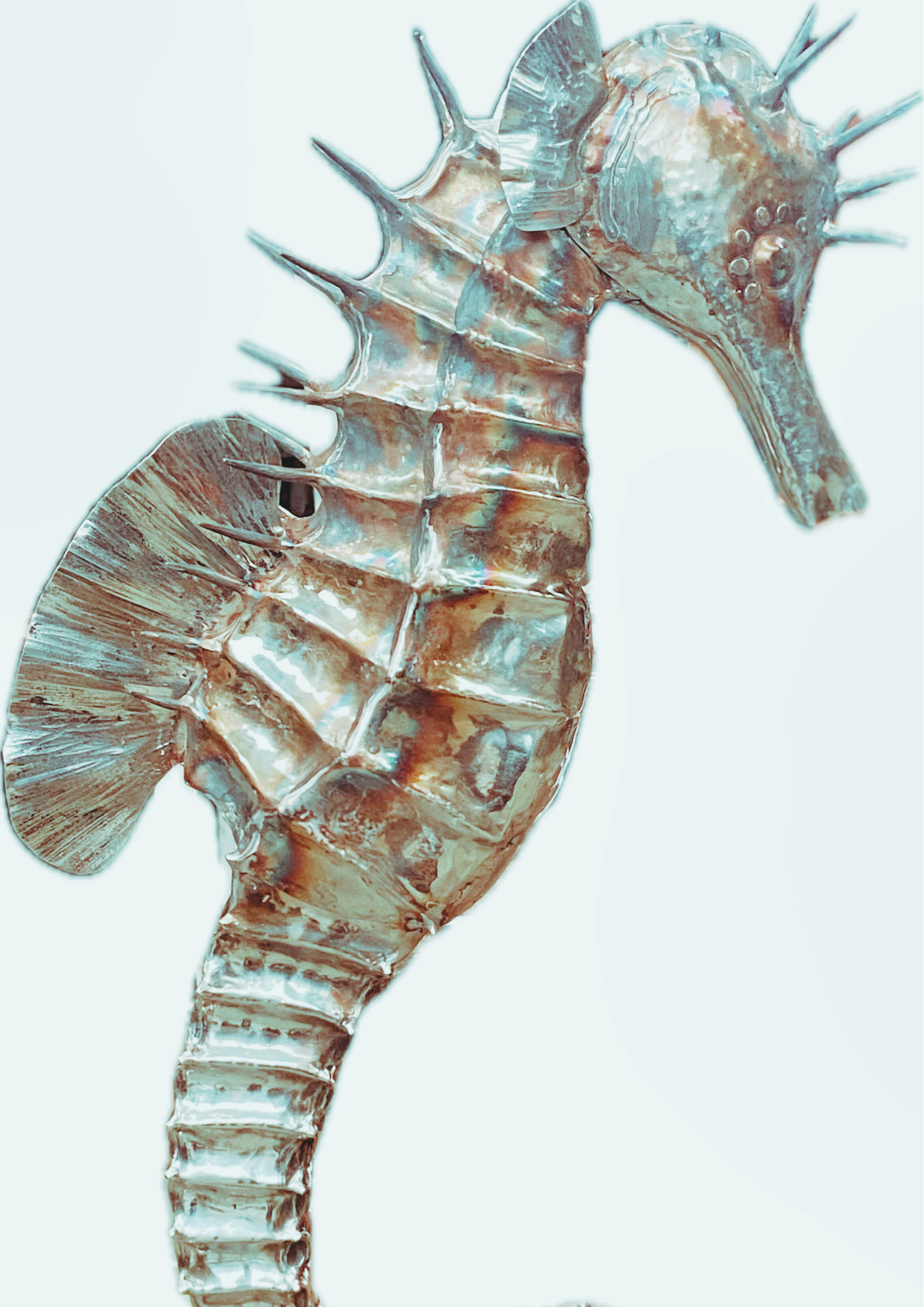Ann Shrosbree
Connecting the three trails.
Ann is the lead artist on the project and a champion of her team’s exceptional artistic ability. She’s mentoring two emerging artists from Pembrokeshire and fulfilling an ambitious brief with her team to co-create with the community, a series of artworks that connect Fishguard and Goodwick.
Ann has chosen to create way markers to guide walkers, with the addition of a fold out map so adults and children/young people can discover and record the artworks along three trail routes. The 20 + way markers will be sculpted creatures mounted onto wooden posts that relate to their habitats and the AR artwork. An example: an insect (depicted on the way finder) in the orchard transfers pollen from plant-to-plant. The viewer will see magnified pollen shapes once they’ve activated Steve and Seán’s QR code.
Ann will create other creatures such as a dragonfly, on a larger scale. These will be made from repurposed materials and they’ll be in locations that relate to the species and link to the pollinator theme.
A direct response to the consultation process is to create a ‘face-in-hole’ Jemima Nicholas sculpture. There were numerous comments and drawings about the Last Invasion and suggestions that Small World Theatre could help drive footfall to the Last Invasion Tapestry in Fishguard Town Hall. Ann is proposing a Jemima (a selfie opportunity) near her plaque outside the Town Hall and opposite the Royal Oak where the treaty was signed.
Gideon Petersen
The importance of protecting endangered species.
Did you know that the Long-snouted seahorse (scientific name: Hippocampus guttulatus) is present in North Pembrokeshire?
Gideon's work is often large scale and seen in public spaces. He likes using stainless steel because it's hard wearing and it will keep its quality forever. Gideon has chosen to create a beautiful 4.5 meter/15 foot-tall seahorse which will stand near the start of the Marine Walk below St Teresa's Convent overlooking Fishguard Harbour. It will be seen by residents in Goodwick and viewed by passengers arriving and departing from our shores.
There are already several wonderful works of art sited around Goodwick, Fishguard and Lower Fishguard that reflect the history and culture of the area. Gideon's sculpture works with the themes of climate change that came out of the public consultation sessions, and the heart breaking reality of endangered species. It is a reminder of the fantastic work done by the Sea Trust, marine conservationists, and the community to keep our seas and shoreline plastic and pollutant free, so that habitats such as seagrass beds are protected.
Gideon has made a beautiful, elegant model of the sculpture so that we may imagine the final piece with its mystical and magical qualities.
Bill Hamblett
Arches of natural things.
Bill led the public consultation process and has been instrumental in guiding the artists in their interpretation of the comments, stories and drawings. Biodiversity was strongly referred to in all the consultation sessions and Bill’s interpretation is to create archways, or threshold indicators, at the start and end of the three trails and in interesting locations highlighted by the public.
Bill will represent the natural world on the threshold indicators - the things we can hope to see while walking the trails. They will build excitement and become ‘portals’ to re-imagine and encourage a different perception of the landscapes connecting Fishguard and Goodwick.
The arches will be made from metal with woven rods twining around to add strength. They will be decorated with colourful, pictorial metal cut outs of creatures identified during the consultation. Bill has considered accessibility; arches follow pathways with wheelchair access and divided arches appear where vehicular traffic must pass.
Struck by the wonderful view across Lower Fishguard and towards Dinas Head, Bill is intending to create a Rococo style picture frame to define the composition of the masterpiece that is the coastal landscape. The frame will be in the in 16:9 ratio (common in film and photography) in front of a seat offering opportunities for both contemplation and photography.
Toby Downing
Ben Cramp
Merging the worlds of play and art.
Imagine if the flowers could speak, what would they say? What might we hear when we listen to the flowers? What would they want to say to us if they could talk?
Toby and Ben are proposing to build interactive sculptures that respond to their locality in a playful and intriguing way. These inventive artists use recycle and repurpose objects to create large scale and often kinetic structures. Inspired by the young people's drawings of flowers and pollinators, the new artworks are intending to merge the worlds of play and art.
At the former site of the helter-skelter lighthouse, the artists are proposing to build a kinetic sculpture with a spiralling formation of fish. The shoal will rotate around a central post in the wind, with echoes of children's past play.
A working Kaleidoscope sculpture is an alternative to another old favourite - the telescopes along the seafront. The viewer will enjoy jumbled abstract patterns made by the loose parts falling in unique combinations. The parts may be natural forms, imagery or even snippets of young people's drawings
Steve Knight
Seán Vicary
Looking at the overlooked and making the invisible visible.
The edge of the sea is a place for dreaming. A point of departure for the imagination to travel on a journey. What could be out there? What lies over that horizon? What lifeforms lurk underneath that vast expanse of water?
The first part of our proposed artwork takes its cue from this experience of looking out to sea, and is further inspired by local maritime history and the navigation beacons, lighthouses and wartime radar stations of the surrounding coastline.
Plankton are a microscopic group of marine organisms that drift along ocean currents.
There are two types of Plankton: Phytoplankton, which are tiny plants, and Zooplankton, which are tiny animals. Together these microscopic organisms are fundamental to life in our seas, forming the base of the Oceanic food web and providing up to half the oxygen we breathe.
Plankton also come in an amazing variety of wondrous forms which have been exciting artists since their initial discovery in the late 19th Century, famously popularised by Ernst Haeckel in his 1899 publication Art Forms in Nature.
We will use Augmented Reality to install a series of virtual, large scale, animated sculptures inspired by planktonic forms along the Parrog and Marine Walk. These will be viewable via a smartphone using locally placed QR codes.
Contact
David Pepper, Community Link trails.communitylink@gmail.com






